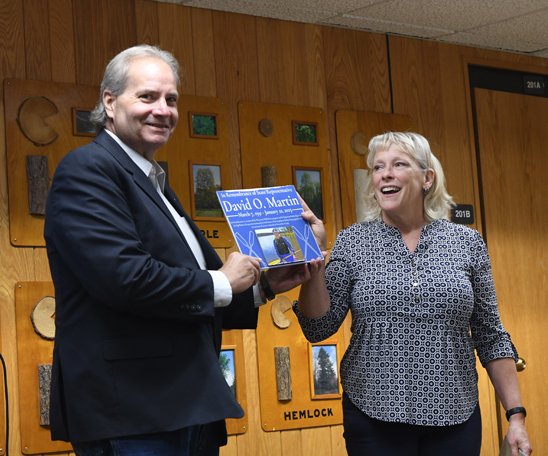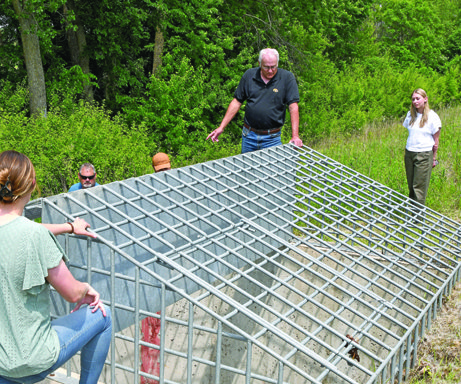RICHLAND CENTER - Many area residents have heard that the movie theaters in Richland Center are closing – Center Cinema Twins downtown and Starlite 14 drive-in on US Hwy. 14 East.
While that is true, it’s only part of the story.
Theater owners Bill and Lisa Muth say, “The bottom line is we’re retiring. If someone wants to buy, we’re all in favor of selling and we’ll help them.
“We set a six-month goal, ending in March, that if there are no buyers for both (the indoor theaters and the drive-in) we’ll start selling off the equipment.
“Just because we’re retiring doesn’t mean the theaters will permanently close, as long as a new buyer is found. We will help them get their feet on the ground and get started. We’ll explain all the nuts and bolts of the operation.”
The Muths make clear that Center Cinema Twins and Starlite 14 are a package deal; not one or the other.
In any case, both the indoor and drive-in theaters will be closed soon; the drive-in’s last show was on Sunday, September 1 (which is normal for any year), and the indoor theater’s last show will be on Thursday, September 5.
Last of its kind
The closing of the Starlite 14 leaves just eight drive-in movie theaters remaining in Wisconsin. On closing night Sunday the Starlite set a new record for moving going patrons, with 185 vehicles and 562 people taking in a double feature of Aladdin and The Lion King.
When Richland Center Mayor Mike Kaufman heard that the theaters were closing, he said on WRCO that he’s very concerned because, “The theater is an awfully important part of every community. I’m trying to put a plan in place…Even though it’s a private entity, it affects all the community.” Mayor Kaufman said he has asked a City Council member to investigate the possibility of keeping the theaters going.
Meanwhile, the Muths are moving forward with their plan. They have enlisted the services of realtor Gary Kershner (608-647-4513), with a price of $180,000 for the package deal (indoor and outdoor theaters). They state that prospective buyers will be required to sign a non-disclosure agreement on the business’s financial records.
“That will weed out curiosity seekers,” they say.
The Muths want to make clear what the theaters’ sale proposition entails. It includes the building that houses the two indoor screens, but only the structures and equipment at the outdoor theater. The drive-in is on a lifetime lease with the property owners. If the drive-in permanently ceases to exist the property owners get the land back free and clear. The Muths have never owned the land.
No rent to run the drive-in theater is paid by the Muths; however they pay property tax on 20 acres of land, even though the drive-in takes up only five of those acres. The property owners are free to do as they please with the remaining 15 acres. Bill Muth keeps the drive-in area mowed.
A new owner could do as they wished with the structures at the drive-in, aside from moving them elsewhere; however the only actual monetary value is in the equipment, which includes a relatively new digital projector. The indoor theater obtained two new digital projectors at the same time.
“All digital conversion assistance will be paid off,” the Muths said. “We will liquidate assets to pay off the digital obligations.”
The Muths point out that a buyer couldn’t get financial backing for the drive-in only, because of the lifetime lease of the land.
“The two businesses support each other,” the Muths say. “The drive-in can make more in four months than the indoor all year.”
Bill Muth has been involved with the movie theaters’ operations for most of his life. He started working at them in 1975, when Don Nanstad was manager; followed by working for Richard Resnick, whose wife was related to the Eskin family – longtime Richland Center movie theater owners. When Resnick died, his son, Richard Junior, ran the operation until he put it up for sale. Knute Nelson bought the indoor theater on a land contract, later selling it to Ed Nicolay. When the Muths bought it in 1988 they didn’t want a land contract, so they bought it through a bank and paid that loan off.
The Muths have run the movie theaters as a labor of love for more than three decades.
They say, “For the greater good of the community, we sacrificed and skipped school events (of their kids). “We’ve dedicated all this time to running these theaters and now it’s time for us to live our lives a bit more.”





